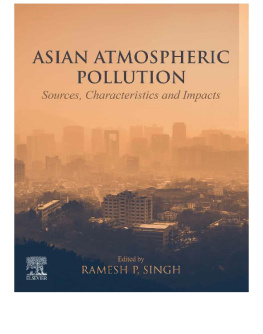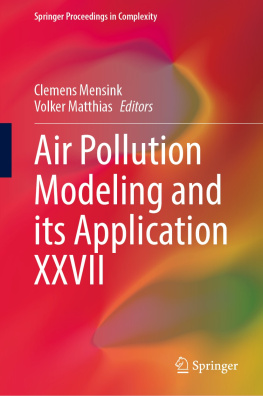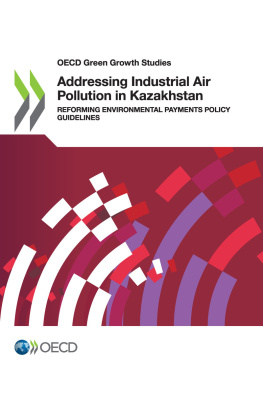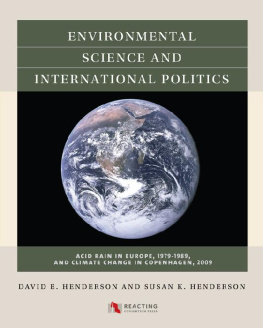
THE CHIMNEY OF THE WORLD
Clearly written, wide-ranging and inventive in its research, Mosleys path-breaking social and environmental history not only shows us why smoke pollution was an insoluble problem for Victorians. It also shows us how competing narratives shape the perception of public issues. This book, therefore, is more than an excellent case study of a major nineteenth-century problem. It speaks directly to contemporary failures to deal with equally grave environmental issues, and it provides a new way to think about the public perception of technological change. David E. Nye
Stephen Mosleys The Chimney of the World is a wonderful piece of scholarship. While it focuses on Manchesters smoke problem in the Victorian and Edwardian eras, it treats a significant pollution issue within the full spectrum of politics, economics, and culture with implications beyond Englands industrial core. It explores the complex, and often contradictory, reactions to coal smoke as a symbol of economic vitality and livelihood, on the one hand, and a serious health threat, on the other. This is a sophisticated and important contribution to urban environmental history. Martin V. Melosi
The Chimney of the World explains how and why air quality became an important and keenly contested issue in the worlds first industrial city. It explores the devastating human and environmental costs of Manchesters steam-driven economic miracle and how the rhythms of the urban smoke cycle helped to shape the citys built environment and came to affect almost every aspect of peoples day-to-day lives. The analysis then turns to the interpretation of competing environmental discourses, focusing on how highly diverse narratives about smoke were used by contemporaries to rationalise, naturalise or criticise the dramatic changes wrought by air pollution in nineteenth century Manchester. The book continues with an exploration of decision-making about smoke prevention technologies, and the development of public policy and interest group responses to air pollution. The Chimney of the World concludes by reflecting on the compelling continuities (and striking disjunctures) between past and present attitudes towards air pollution. This broad-ranging work adds a new dimension to the study of urban environmental history: a local perspective that is highly relevant for a better understanding of todays global pollution dilemmas.
Stephen Mosley is senior lecturer in history at Leeds Metropolitan University. His research interests are in urban culture and environmental history.
THE CHIMNEY OF THE WORLD
A History of Smoke Pollution in Victorian and Edwardian Manchester
Stephen Mosley
First published 2001 by The White Horse Press
First published in paperback 2008 by Routledge
2 Park Square, Milton Park, Abingdon, Oxon OX14 4RN, UK
Simultaneously published in the USA and Canada
by Routledge
270 Madison Ave, New York, NY 10016
Routledge is an imprint of the Taylor & Francis Group, an informa business
2001, 2008 Stephen Mosley
All rights reserved. No part of this book may be reprinted or reproduced or utilised in any form or by any electronic, mechanical, or other means, now known or hereafter invented, including photocopying and recording, or in any information storage or retrieval system, without permission in writing from the publishers.
British Library Cataloguing in Publication Data
A catalogue record for this book is available from the British Library
Library of Congress Cataloging-in-Publication Data
Mosley, Stephen.
The chimney of the world : a history of smoke pollution in Victorian and Edwardian Manchester / Stephen Mosley.
p. cm.
Includes bibliographical references and index.
1. Smoke Environmental aspects England Manchester History 19th century. 2. Air Pollution England Manchester History 19th century. 3. Smoke prevention England Manchester History 19th century. I. Title.
TD884.M67 2008
363.73920942733 dc22
2008018657
ISBN10: 1874267499 (hbk)
ISBN10: 0415477670 (pbk) (pbk)
ISBN13: 9781874267492 (hbk)
ISBN13: 9780415477673 (pbk)
Abbreviations
MAPS | Manchester Association for the Prevention of Smoke |
NVAA | Manchester and Salford Noxious Vapours Abatement Association |
SAL | Smoke Abatement League |
Illustrations
Figures
Tables
Acknowledgements
Many people have helped in making the writing of this book possible. I am particularly indebted to fellow historians John Walton, David E. Nye, Paolo Palladino, Thomas Rohkramer and Mike Winstanley for their useful comments on early drafts of this work. I am also grateful to colleagues in other disciplines who found the time to discuss issues where I do not have specialist knowledge, and to read and advise on some sections of the manuscript. Professor T.A. Mansfield, Peter Lucas and Colin Wells of the University of Lancasters Institute of Environmental and Biological Sciences, and Greg Myers of the Universitys Linguistics Department, provided me with important information and saved me from making several mistakes. Any errors that remain in the text are entirely my own responsibility.
I owe a large debt of gratitude to the librarians and archivists of the following institutions for providing generous assistance: the University of Lancaster Library; the University of Birmingham Library; the British Library; the Local Studies Unit of the Manchester Central Reference Library; the Salford Local History Library; the National Society for Clean Air, Brighton; and the Working Class Movement Library, Salford. I must also thank the Economic and Social Research Council for funding my research between the years 199497, and the University of Birmingham, Westhill, for allowing me study leave to finish the final draft of the manuscript. Special thanks must go to Alison and Andrew Johnson for their generous help in bringing the project to completion. My greatest debt is to my wife, Monika Biischer, who provided constant encouragement along the way. Without her invaluable support this book would not have been written.
Map 1. The Cotton Towns of North-West England.
Adapted from Fowler, A. and T. Wyke, The Barefoot Aristocrats, 1987.
Map 2. Manchester in 1838.
Adapted from Redford, A., and Russell, I.S.,














